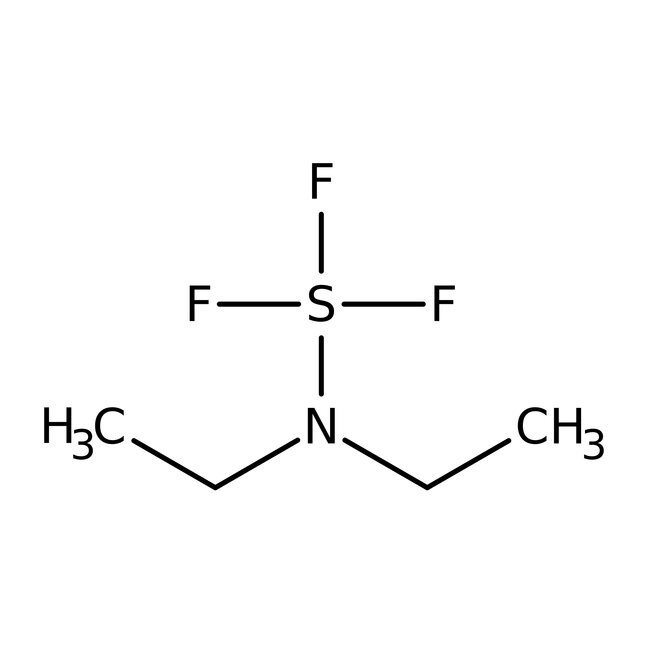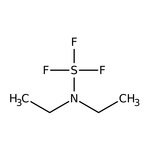Search Thermo Fisher Scientific
Diethylaminosulfur trifluoride, 95%, Thermo Scientific Chemicals



Diethylaminosulfur trifluoride, 95%, Thermo Scientific Chemicals
Chemical Identifiers
Specifications
Description
This Thermo Scientific Chemicals brand product was originally part of the Alfa Aesar product portfolio. Some documentation and label information may refer to the legacy brand. The original Alfa Aesar product / item code or SKU reference has not changed as a part of the brand transition to Thermo Scientific Chemicals.
Diethylaminosulfur trifluoride (DAST) is used as a precursor to prepare 2,6-dimethoxybenzoyl fluoride and 2-thiazolines. It is a useful fluorinating agent used for a variety of compounds including alcohols, thioethers, alkenols and cyanohydrins. It also serves as a catalyst for Friedel-Crafts allylation reaction using tertiary cyclopropyl silyl ethers and in the rearrangement of homoallylic alcohols to unsaturated aldehydes. It plays an important role for gem difluorination of ketopipecolinic acids.
Solubility
Miscible with water, ethanol, benzene and acetonitrile.
Notes
Store in cool place. Moisture sensitive. It reacts with water and ethanol. Incompatible with water, acids and bases.
Figures
Documents & Downloads
Certificates
Frequently asked questions (FAQs)
Citations & References
Safety and Handling
Classification of the substance or mixture
CLP classification - Regulation(EC) No 1272/2008
Label Elements
Signal Word
Danger
Hazard Statements
H302 + H312 + H332 - Harmful if swallowed, in contact with skin or if inhaled
H314 - Causes severe skin burns and eye damage
Physical Hazards
H226 - Flammable liquid and vapor
EU Specific Hazard Statements
EUH014 - Reacts violently with water
Precautionary Statements
P210 - Keep away from heat, hot surfaces, sparks, open flames and other ignition sources. No smoking
P280 - Wear protective gloves/protective clothing/eye protection/face protection
P301 + P330 + P331 - IF SWALLOWED: Rinse mouth. Do NOT induce vomiting
P303 + P361 + P353 - IF ON SKIN (or hair): Take off immediately all contaminated clothing. Rinse skin with water or shower
P305 + P351 + P338 - IF IN EYES: Rinse cautiously with water for several minutes. Remove contact lenses, if present and easy to do. Continue rinsing
P310 - Immediately call a POISON CENTER or doctor/physician